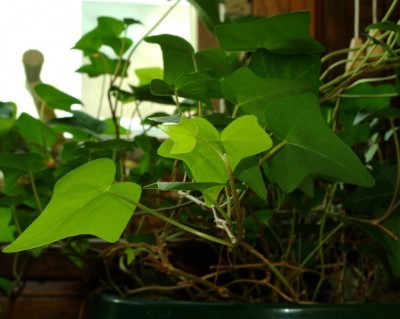






Ivy can make a wonderful, bright light houseplant. It can grow long and lush and bring a bit of the outdoors inside. Growing ivy indoors is easy as long as you know what makes an ivy plant happy. Let’s learn a little bit more about ivy and proper ivy plant care.
Ivy houseplants can actually be one of several different varieties. These include:
English ivy cultivars are the most common type of ivy grown in the home, but all can be found if you look hard enough. Each of the varieties of inside ivy plants also come in several different cultivars. This means that there is a dizzying array of ivies that you can choose for your home, depending on your preference for color (all shades of green or variegated with white, yellow, gray, black and cream), leaf shape and growth habits.
Growing ivy indoors isn’t difficult as long as you provide what the plant needs. The most important part of indoor ivy plant care is light. All true ivies need bright light. Variegated cultivars can take medium light, but be aware that their variegation will become less pronounced in less light. Without enough light, inside ivy plants will become leggy and sickly looking. They will also be more prone to pests.
When watering your ivy, always check the soil before adding water. Ivies prefer to be kept slightly on the dry side, so let the soil dry out some (dry to the touch on top) before you water your ivy plant again. Also, make sure that your plant has excellent drainage, as ivy does not like to be in standing water or overly wet soil.
Caring for ivy plants should also include regular fertilizing. Fertilize your ivy about once a month in the spring, summer and fall with a water soluble, nitrogen-rich fertilizer. Do not fertilize in the winter, as this is the ivy’s dormant period and the fertilizer may do more harm than good at this time.
Ivy houseplants benefit from periodic washing to remove dust and pests from their leaves. To wash your ivy plant, simply place the plant in the shower and allow the water to run over the plant for a few minutes. If you find the plant has a serious pest infestation, you may need to bring the spray closer to the plant to help knock off all the pests.
Caring for ivy plants is easy and rewarding. You will enjoy not only growing ivy indoors, but will also have fun with the wide selection of ivy plants available to do so.
Copyright © www.100flowers.win Botanic Garden All Rights Reserved